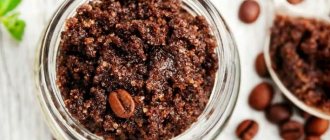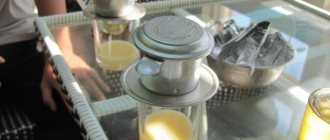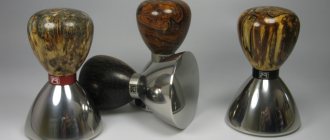Even with fairly average consumption volumes per year, the average family throws away 3-4 kg of coffee grounds. Sending the next batch of food scraps to the trash bin, many do not even think that the raw materials used to prepare the aromatic drink can still be beneficial. We'll tell you why coffee cake is useful and what uses it can be used for.
For which plants is coffee fertilizer suitable?
And yet, sleeping coffee is a top dressing that is not suitable for every plant. Therefore, before you widely use it in your garden, you need to study for which plants it is most effective to use coffee grounds as a fertilizer. It is most useful for flowers that prefer low pH levels - azaleas, hydrangeas, heathers and rhododendrons. Due to the large amount of potassium in the composition, coffee grounds can be used as a fertilizer when growing vegetable crops, such as tomatoes, potatoes, cucumbers, and peppers. Feeding fruit trees with dormant coffee will also help to significantly increase their fruiting. Magnesium contained in coffee is beneficial for berry bushes. Magnesium and potassium will help you get a high yield of root crops, while nitrogen is indispensable for green crops.
Among house plants, roses, palm trees, ficuses and ferns, as well as violets and asparagus respond best to coffee fertilizing. When using coffee grounds as fertilizer for indoor plants, it is recommended to first drain and dry them. If you simply pour the remains of coffee from a cup into the pot, most likely there will be no benefit, but on the contrary, the soil may become crusty and begin to mold. To prevent this, you need to mix the prepared grounds with soil suitable for this type of plant.
Coffee with sugar or milk should not be used to feed garden, vegetable and flower crops, since sugar attracts ants, and milk provokes the development of putrefactive processes in the soil, which can harm the root system of plants.
Exfoliating scrub for body or face
The cake is an excellent natural scrub. Small particles gently exfoliate dead skin cells, giving it radiance and an even tone. It is also an excellent remedy for combating cellulite. Preparing a body scrub involves adding a small amount of warm water to dry coffee grounds. You can add a couple of drops of your favorite essential oil (tea tree has an antibacterial effect, orange tones and helps fight fat deposits). The resulting mixture is evenly distributed throughout the body and gently massaged along the massage lines, then washed off with warm water. To tone the skin, a contrast shower is also used after the procedure.
Without using chemical components at home you can improve your hair color
The facial scrub is prepared as follows: take a couple of tablespoons of dry cake and mix with cream or sour cream (for dry skin) or milk (for oily skin), you can add a couple of drops of lemon juice. The mixture is applied to the face and massaged along the massage lines for several minutes. Areas around the eyes and lips should be avoided.
For a body scrub, use any cake, for the face - only very finely ground.
Coffee brewed in a coffee maker or Turkish coffee maker is a powerful source of caffeine that can give you a boost of energy throughout the day. It is also a natural, free care product or real medicine for garden plants. No dyes, preservatives or other synthetic substances - only environmentally friendly powder with a refined coffee aroma.
Coffee can give you energy after waking up in the morning. This is known to all lovers of this drink. However, its scope is much wider. You should not rush to throw coffee grounds (grounds, residue) into the trash bin; this is a very multifunctional product.
Methods of use
Watering
Before using used coffee as fertilizer when watering plants, it must be diluted in a sufficient amount of liquid. To prepare a solution for 10 liters of water, 1 cup of grounds is required. The cake is poured with a small amount of water and left to swell for about a day. After swelling, the amount of liquid is adjusted to the calculated value and used for watering plants.
After feeding the plants with coffee grounds, it is advisable to water the soil again, but with clean water. This technique will allow the minerals to be slowly released to nourish the plants. When planting bushes, you should spill the soil with coffee solution at the rate of 1 liter per bush.
Mulching
Coffee grounds can also be used to mulch plantings to protect the soil from drying out, repel pests and improve the structure of the soil. However, it must be remembered that when using grounds as mulch, as in the case of using coffee cake as fertilizer in a garden at the dacha, you should dry it thoroughly to prevent the development of mold.
Soil Supplement
Dried ground coffee as a fertilizer can be added to the planting hole or hole before planting to improve the soil structure. This technique makes the soil more drained and loose, which ultimately has a positive effect on the health of the plants and the volume of the harvest. When used on light soils, the grounds act as a binding component. In this case, fertilizing is applied to the top soil layer at the rate of 200 ml per 1 m².
Compost
To speed up the ripening of compost, it is enough to pour coffee infusion on each layer no more than 10 cm thick. Coffee grounds act as nitrogen components that trigger an exothermic reaction inside the compost heap, in other words, heating it up, which makes the compost ripen much faster. This method is so effective that some summer residents specifically purchase inexpensive varieties of ground coffee and sprinkle layers of compost over them.
For seedlings
Recently, the method of growing vegetable seedlings on a coffee substrate has become popular. But in order to prevent soil depletion, it is necessary to feed the seedlings with complex fertilizers from time to time.
Pest protection
Coffee cake as a fertilizer in the garden is also very effective for protecting plants from mature individuals of harmful insects - ants, snails, aphids, slugs. According to the experience of some gardeners, coffee can also destroy pest larvae, in particular mosquitoes and garden bugs. This product is not as effective as insecticides, but it is also much safer.
Top 5 most popular coffee face mask recipes
Before we begin describing the most interesting coffee masks, we should answer the frequently asked question: should you use an instant version for your cosmetic product, or should you still make a face mask from ground coffee? Is there a fundamental difference or is it possible to replace one product with another? In fact, all recipes assume the interchangeability of instant coffee with ground coffee, but of course the latter retains much more useful components and microelements than in its instant counterpart. But the choice is yours; in any case, these coffee face masks will help your face gain a healthy glow. So, let's get down to the main top-end face masks using coffee in their composition:
Face mask with cinnamon and coffee.
This mask can clean pores well and is quite simple to prepare. So, mix a tablespoon of coffee grounds with half a teaspoon of salt and the same amount of cinnamon, then add a little sugar and dilute with heated olive oil to a thick paste. Apply the mask for 15 minutes, then wash it off with warm water and enjoy the result.
Mask with coffee and olive oil for dry skin.
This mask is mixed with just two ingredients, such as coffee grounds and olive oil in equal volumes. An excellent mask option for people whose skin is naturally prone to flaking and redness.
A rejuvenating version of a face mask with coffee to tighten wrinkles.
This mask contains two teaspoons of crushed oatmeal, mixed with two tablespoons of coffee grounds and one tablespoon of sour cream added to it. The mask applied to the face should be left for 25 minutes, then rinsed off with plenty of warm water. This face mask is intended for regular use, but should not be used more than three times a week.
Face mask using coffee for those with oily skin.
This version of the mask will help you get rid of unpleasant oily shine in the T-zone, and also reduce inflammation. To create this cosmetic product, mix cottage cheese with coffee grounds, then apply the mixture to your face and leave until the mask dries completely.
An effective mask with coffee in the fight against acne.
If you are unlucky and have acne on your face, then we suggest you use this mask. To prepare it, you will need to mix one teaspoon of medium-ground natural coffee with a tablespoon of any cosmetic clay (preferably black), then add a little orange zest and salt, quenched in table vinegar, to the mixture. The mask should be applied in a circular motion and rinsed off or wiped off with a damp cloth after five minutes.
Regardless of which version of the homemade coffee mask you choose, you will be able to feel the excellent effect of this cosmetic product, especially if, after applying the mask, you allow yourself to relax with a cup of your favorite coffee.
Where should you not use coffee grounds?
Coffee grounds are rich in nitrogen, so if you use them in excess, you can burn the root system, which will lead to the death of the plant.
Poorly dried coffee waste can cause mold and fungal diseases to develop and kill plants. Additionally, coffee fertilizer is not suitable for tradescantia, asparagus, geraniums and other crops that prefer more alkaline soil. Fertilizing with cake can change the shade of rose flowers.
Caring for flowers and seedlings
Natural coffee is an excellent fertilizer for delicate crops that are grown not only in garden beds, but also indoors. Bushes of tea and climbing roses, as well as hydrangeas, respond well to the cake. After moderate application of grounds, the flowers lay more ovaries, their flowering period is more abundant, and the buds grow large and lush. Many gardeners note that fertilized plants acquire a more saturated color.
Using coffee grounds for indoor crops may only be advisable if the soil needs to be slightly acidified and fertilized. This is especially true for those plants that actively grow only in acidic soil. The cake can be safely applied under fuchsias, azaleas, ferns and anthurium. In limited quantities, coffee can be added to the substrate for vegetable seedlings. Thanks to this, the soil will become permeable to nutrient moisture and air.
Many gardeners prefer to germinate crop seeds in soil that contains nutritious grounds. But for this procedure you can only use dried coffee grounds. The seedlings turn out strong and tolerate planting in open ground well. This method of seed germination is especially relevant for tomatoes, cucumbers and peppers.
Useful tips
Dried coffee grounds are very light, so when used dry, the slightest breeze can blow them away from the garden bed. To prevent this from happening, it is recommended to mix the cake with soil or sawdust and plant it shallowly in the soil.
If the color of the leaves of your plants changes after processing the coffee grounds, you should stop using the coffee grounds as fertilizer. You can carefully strain the coffee infusion and use only the liquid for watering, and use the grounds, for example, to feed conifers.
It is recommended to prepare fertilizer from coffee grounds for the garden, using the cake from the preparation of only natural coffee. It is not advisable to use instant powdered and granulated coffee for this purpose, since their nutritional value is not great.
Odor retention for insect control
Roasted coffee beans have a unique aroma due to the combination of essential oils released under the influence of fire. Green coffee differs from black coffee in a less intense aroma, however, even it can repel insect pests. The unique properties persist even after passing through the esophagus of animals, which helps them spread throughout the tropical and subtropical zone. Once in the ground, caffeine suppresses the growth of nearby plants, thereby giving life to new sprouts.
Using the scent of coffee can help get rid of some garden pests. To do this, you will need to prepare an infusion of coffee cake: pour the grounds with hot water and leave in a dark place for 3-4 hours. This infusion is used to spray garden plants against bronze and slugs. To get rid of ants, pre-dried cake is poured into ant nests. In addition, the aroma of coffee grounds repels wasps. To enhance the spread of the smell, tin cans with a mixture of grounds and saltpeter (20:1) are placed on the site, which is set on fire.











